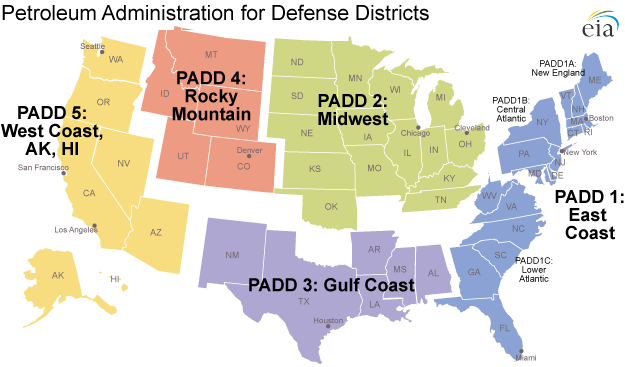What are Fuel Surcharges?
At their most basic, fuel surcharges are an additional sum of money that carriers charge shippers They are found on the invoices of national, regional, and local carriers, often, with no explanation of how they are calculated. Calculating the surcharge as a percentage of the average fuel prices at the time of shipment is standard practice for shippers. However, there is sometimes no telling what other factors they include in the calculation.
Many have questioned whether the fuel surcharge is used to stabilize rates by mitigating unpredictable fuel costs like the carriers claim, or if the additional line item is just a money maker for freight companies. While there is some quick math involved, understanding the fuel surcharge on your next invoice is easier than you think.
There is no universal formula to calculating fuel surcharges leaving each carrier to tweak the numbers for their specific circumstances. However, most carriers publish their percentages or ratios in their tariffs which are easily found on their websites, but not always explained.
Ratio-Based Fuel Surcharge
To calculate a ratio-based fuel surcharge and understand how the carrier came up with the number on your invoice, you need to know three things: what is the fuel index, what is the carrier’s fuel baseline, and what is the carrier’s ratio? Then it is a simple math problem where you subtract the baseline from the fuel index and divide the difference by the ratio; the quotient is the Fuel Surcharge per mile.
The most common ratios used by carriers are .05 and .06, but this is not guaranteed so you will want to determine the correct ratio for your calculations. This is an example of what this calculation would yield with real numbers.
Using this ratio based formula, the carrier is going to charge $0.33 per mile fuel surcharge in addition to their line haul rate. Simple enough!
Percentage-Based Fuel Surcharge
This is the more common method of calculating fuel surcharges, particularly among the largest Less-Than-Truckload (LTL) and Truckload (TL) providers. In order to know the percentages associated with your carriers, you will have to review their tariffs to find the graduated scale they use. The premise for this method is much simpler than the ratio-based method.
Using the price of diesel provided by the Department of Energy (DOE) or Petroleum Administration for Defense Districts (PADD), the carrier charges a corresponding percentage of the applicable net charge as the fuel surcharge. Below is a mock table illustrating how these percentages correspond to real diesel costs. You will quickly notice there is a .05% increase for LTL and .10% increase for TL for every $0.01 increase in the diesel price as reported by the DOE or PADD.
|
Actual Diesel Cost Range |
Fuel Surcharge % by Mode |
||
|
Low Price |
High Price |
LTL |
TL |
|
$2.950 |
$2.959 |
24.00% |
48.00% |
|
$2.960 |
$2.969 |
24.05% |
48.10% |
|
$2.970 |
$2.979 |
24.10% |
48.20% |
Let us step back and give a little information on the DOE and the PADD. While the majority of carriers, especially national carriers, utilize the diesel prices published by the DOE, not every carrier uses that price index. Some regional and local carriers choose to use the price index for their region as defined by PADD.
PADD breaks up the United States into 5 districts and produces a multitude of data regarding petroleum for each district including but not limited to: petroleum prices, amount of crude entering and leaving, amount of crude being refined, and demand for petroleum.

The Last Mile
While there are several ways to calculate fuel surcharges, the most common methods are Percent-Based and Ratio-Based. Whether the calculation is based on the DOE National Average or the PADD aggregate data, make sure you understand the fuel surcharge on your next invoice.
As a final note, like rates, fuel surcharges are often negotiated with carriers. If you are interested in finding out if your rates, fuel surcharges, and other accessorials are truly competitive, let us know; we would be happy to share our expertise with you. Visit us here!
Update: April 10, 2019





